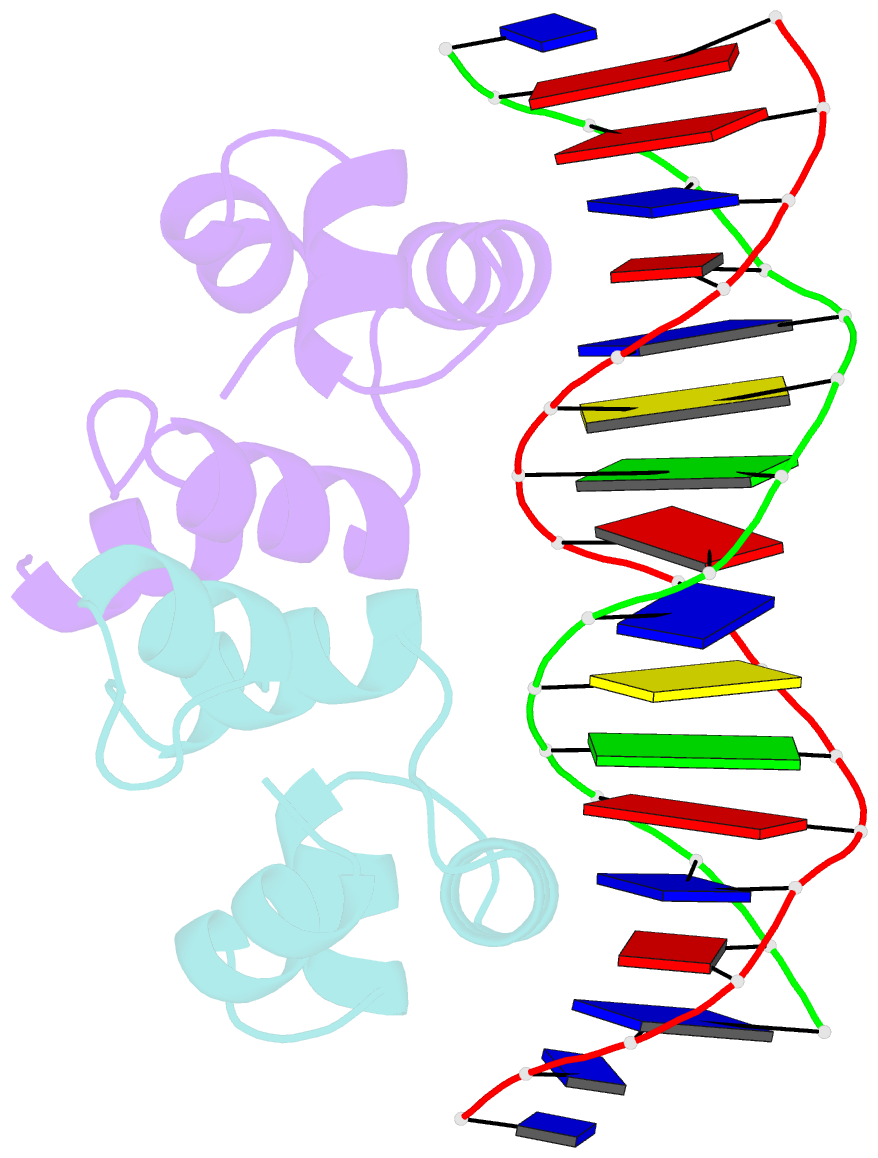Summary information and primary citation
- PDB-id
- 6on0; SNAP-derived features in text and JSON formats;
DNAproDB
- Class
- transcription-DNA
- Method
- X-ray (1.6 Å)
- Summary
- Structure of n15 cro complexed with consensus operator DNA
- Reference
- Hall BM, Roberts SA, Cordes MHJ (2019): "Extreme divergence between one-to-one orthologs: the structure of N15 Cro bound to operator DNA and its relationship to the lambda Cro complex." Nucleic Acids Res., 47, 7118-7129. doi: 10.1093/nar/gkz507.
- Abstract
- The gene cro promotes lytic growth of phages through binding of Cro protein dimers to regulatory DNA sites. Most Cro proteins are one-to-one orthologs, yet their sequence, structure and binding site sequences are quite divergent across lambdoid phages. We report the cocrystal structure of bacteriophage N15 Cro with a symmetric consensus site. We contrast this complex with an orthologous structure from phage λ, which has a dissimilar binding site sequence and a Cro protein that is highly divergent in sequence, dimerization interface and protein fold. The N15 Cro complex has less DNA bending and smaller DNA-induced changes in protein structure. N15 Cro makes fewer direct contacts and hydrogen bonds to bases, relying mostly on water-mediated and Van der Waals contacts to recognize the sequence. The recognition helices of N15 Cro and λ Cro make mostly nonhomologous and nonanalogous contacts. Interface alignment scores show that half-site binding geometries of N15 Cro and λ Cro are less similar to each other than to distantly related CI repressors. Despite this divergence, the Cro family shows several code-like protein-DNA sequence covariations. In some cases, orthologous genes can achieve a similar biological function using very different specific molecular interactions.





